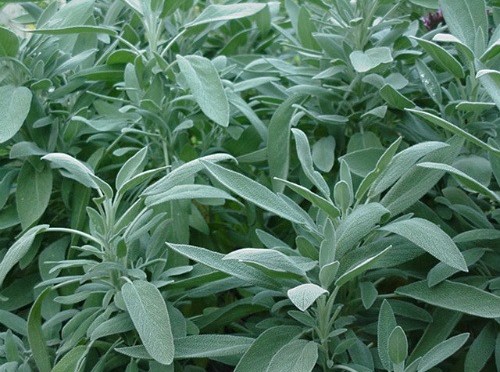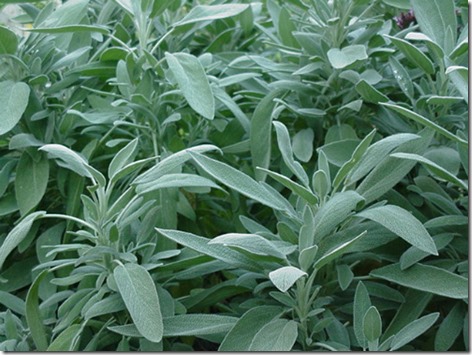Type: Seed or Root (perennial, freely seeding)
Sun Requirements: Full sun
Best Planting Time: Indoors – up to eight weeks before last frost date. Outdoors – up to two weeks before last frost date.
Important Characteristic: Must allow to grow without harvesting for a full year; light pruning is acceptable
Attracts: Bess, butterflies, hummingbirds
Repels: Cabbage moth and carrot rust fly
Pests: No significant pests
Companion Plants: – FAVORABLE – Cabbage, carrots, tomatoes, rosemary, strawberries – UNFAVORABLE – Basil, cucumbers, rue, wormwood
Soil Benefits: N/A
Broadleaf sage is a nice bush-like perennial which has grayish leaves (somewhat like lamb’s ear), and produces blue or purple flowers. As stated in the summary above, sage can be planted indoors up to eight weeks before the last frost date, or outdoors up to two weeks before the last frost date. It can take 2-4 weeks to germinate so be patient. Transplant seedlings outdoors only have hardening them for at least two weeks and space them between 12” and 24” apart. You can also start plants from root cuttings of well-established plants. Ensure the younger plants have a good supply of water until they are healthy and growing well. Sage plants thrive in full sunlight and prefer well-drained soil.
For the first year of a sage plants life, you want to be sparing with harvesting leaves, as much like asparagus, sage needs time to become established and grow a healthy root system. Feel free to lightly prune new plants in order to promote bushing, but be sure to allow it to grow. Once plants are established you can harvest entire plants and they will grow back to allow a second or even third harvest during a season. Leaves can be harvested at any time from an established plant, but are best when harvested just before blooming. Sage give off a spicy scent and flavor.
If companion planting with tomatoes, remember that sage is not compatible with basil. I personally plant basil with my tomatoes so would not use sage as a companion.


